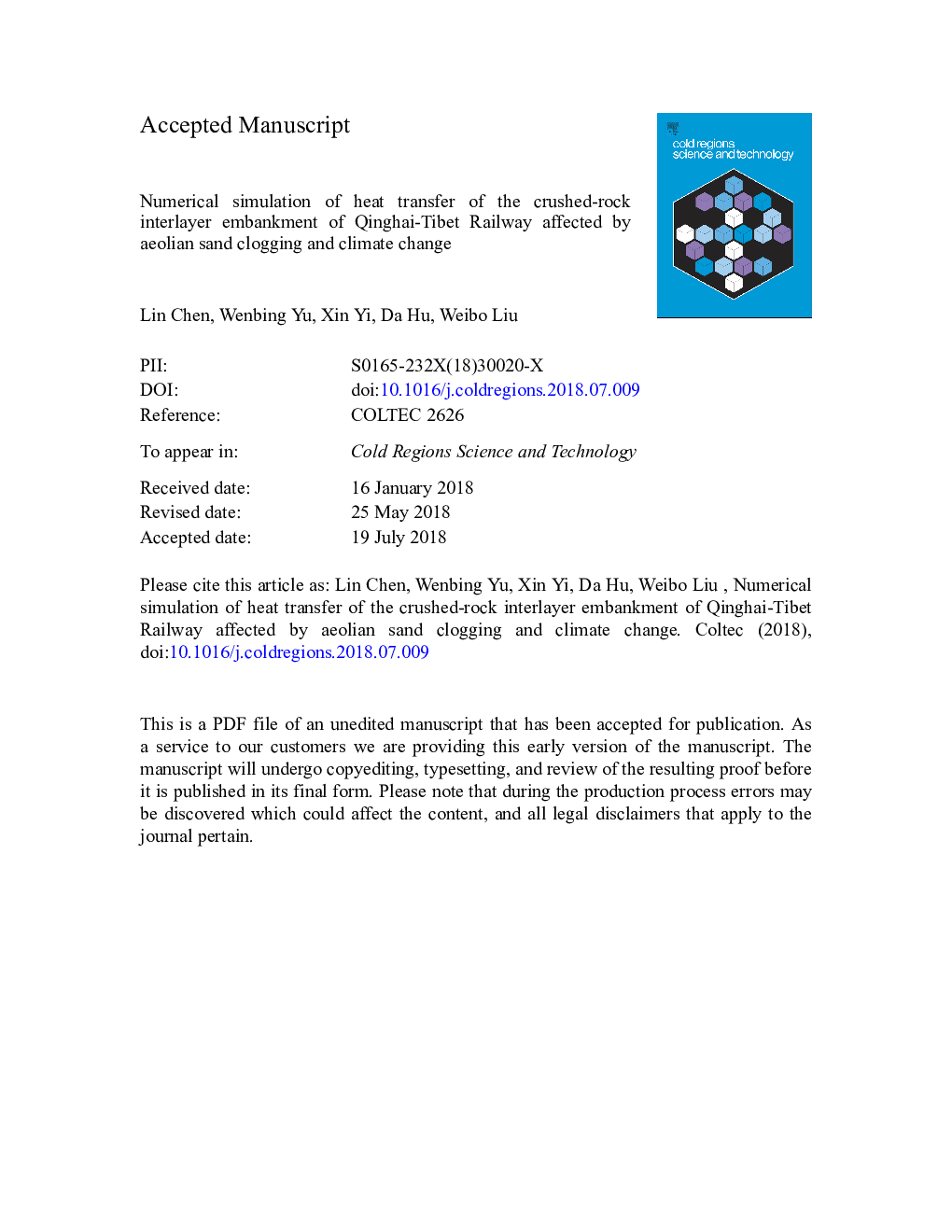| کد مقاله | کد نشریه | سال انتشار | مقاله انگلیسی | نسخه تمام متن |
|---|---|---|---|---|
| 8906342 | 1634409 | 2018 | 30 صفحه PDF | دانلود رایگان |
عنوان انگلیسی مقاله ISI
Numerical simulation of heat transfer of the crushed-rock interlayer embankment of Qinghai-Tibet Railway affected by aeolian sand clogging and climate change
ترجمه فارسی عنوان
شبیه سازی عددی انتقال گرما از خاکستر بین دو لایه خرد شده سنگ از قلعه چینگهای تبت که تحت تأثیر اشباع شن و ماسه آن و تغییرات آب و هوایی قرار گرفته است
دانلود مقاله + سفارش ترجمه
دانلود مقاله ISI انگلیسی
رایگان برای ایرانیان
کلمات کلیدی
موضوعات مرتبط
مهندسی و علوم پایه
علوم زمین و سیارات
علوم زمین و سیاره ای (عمومی)
چکیده انگلیسی
The crushed-rock interlayer (CRI) has been used to cool the railway embankment subbase and subgrade of the Qinghai-Tibet Railway (QTR) in permafrost regions. However, in addition to the climate change, aeolian sand clogging has been affecting this mitigation techniques aimed to increase heat extraction and reduce subsurface heat penetration by air convection through the voids of the CRI. Its long-term performance is evaluated herein using a numerical modelling. Simulation results demonstrate an unclogged CRI can mitigate permafrost warming for the first 20â¯years with a simulated increase in average air temperature by 0.052â¯Â°C aâ1. But after sand clogging, including both filling of voids in the CRI and covering of embankment slopes, its cooling performance is weakened. In such conditions, permafrost table is increasing and the permafrost is warming up under different mean annual air temperature (MAAT) of â4.5, â5.5, and â6.5â¯Â°C. The water content of the aeolian sand can also affect the cooling effectiveness of CRI. A 1â¯m-thick dry sand cover can induce an increase in ground temperature. But wet sand layer can mitigate and delay the effect of climate change on the permafrost degradation. The sand-control measures and additional engineering techniques should be adopted to prevent the long-term thermal stability of the QTR in sandy permafrost zone of Qinghai-Tibet Plateau.
ناشر
Database: Elsevier - ScienceDirect (ساینس دایرکت)
Journal: Cold Regions Science and Technology - Volume 155, November 2018, Pages 1-10
Journal: Cold Regions Science and Technology - Volume 155, November 2018, Pages 1-10
نویسندگان
Lin Chen, Wenbing Yu, Xin Yi, Da Hu, Weibo Liu,
